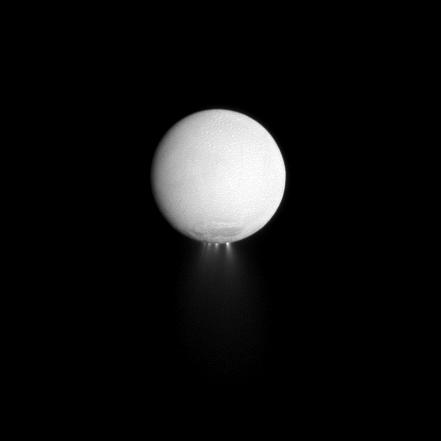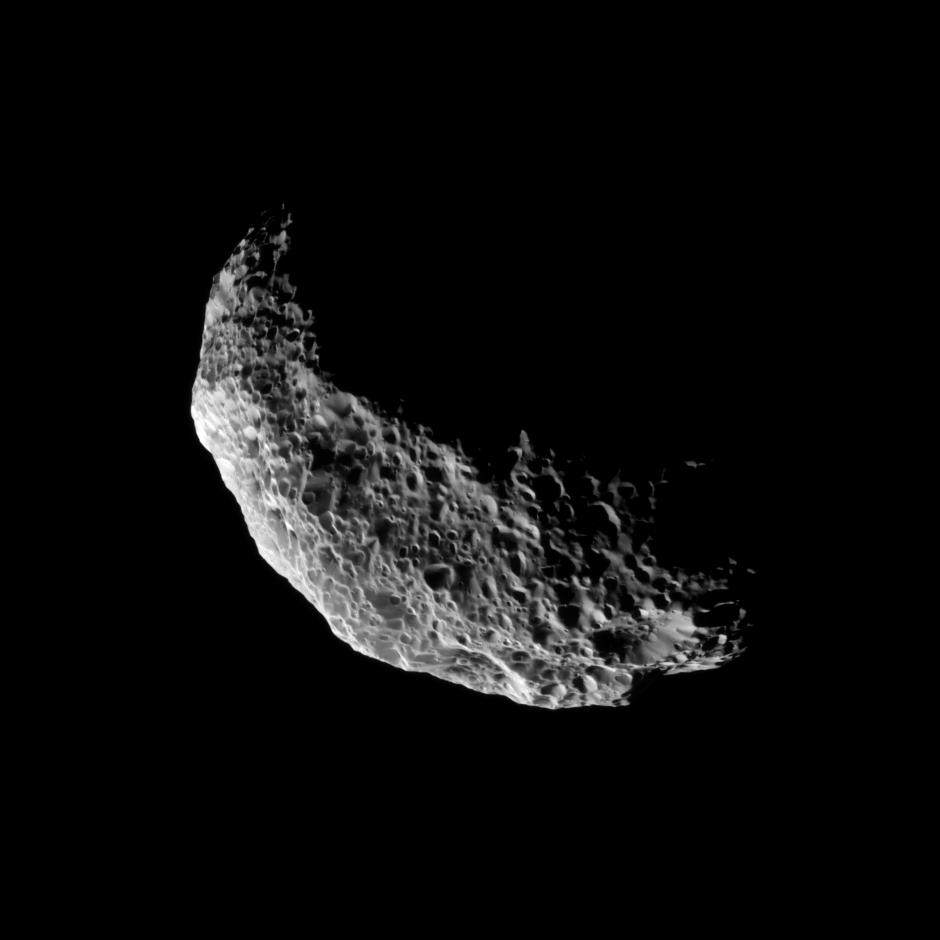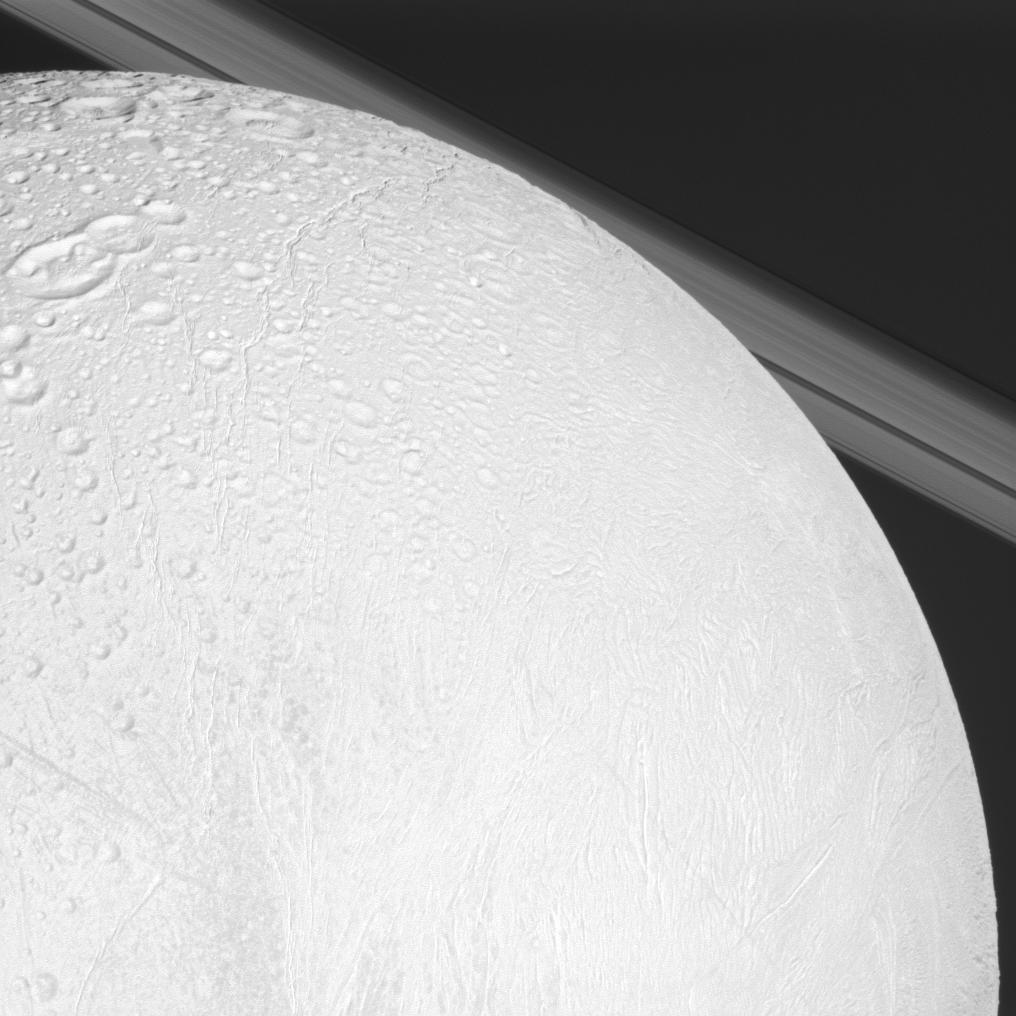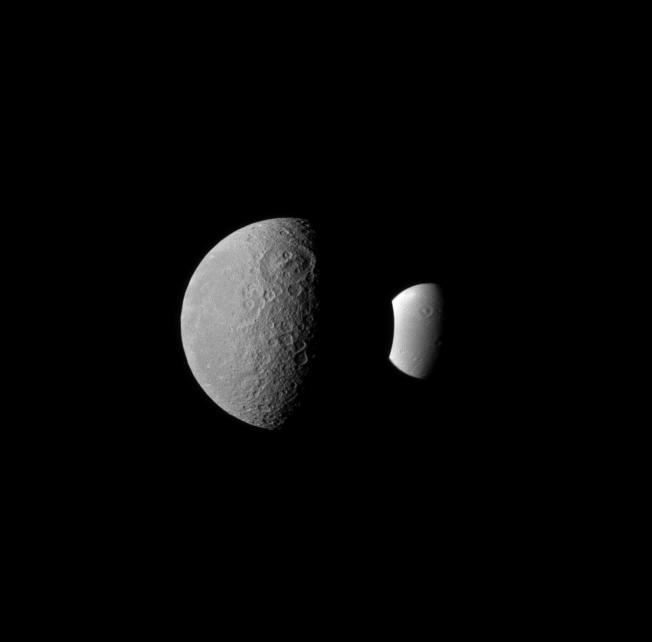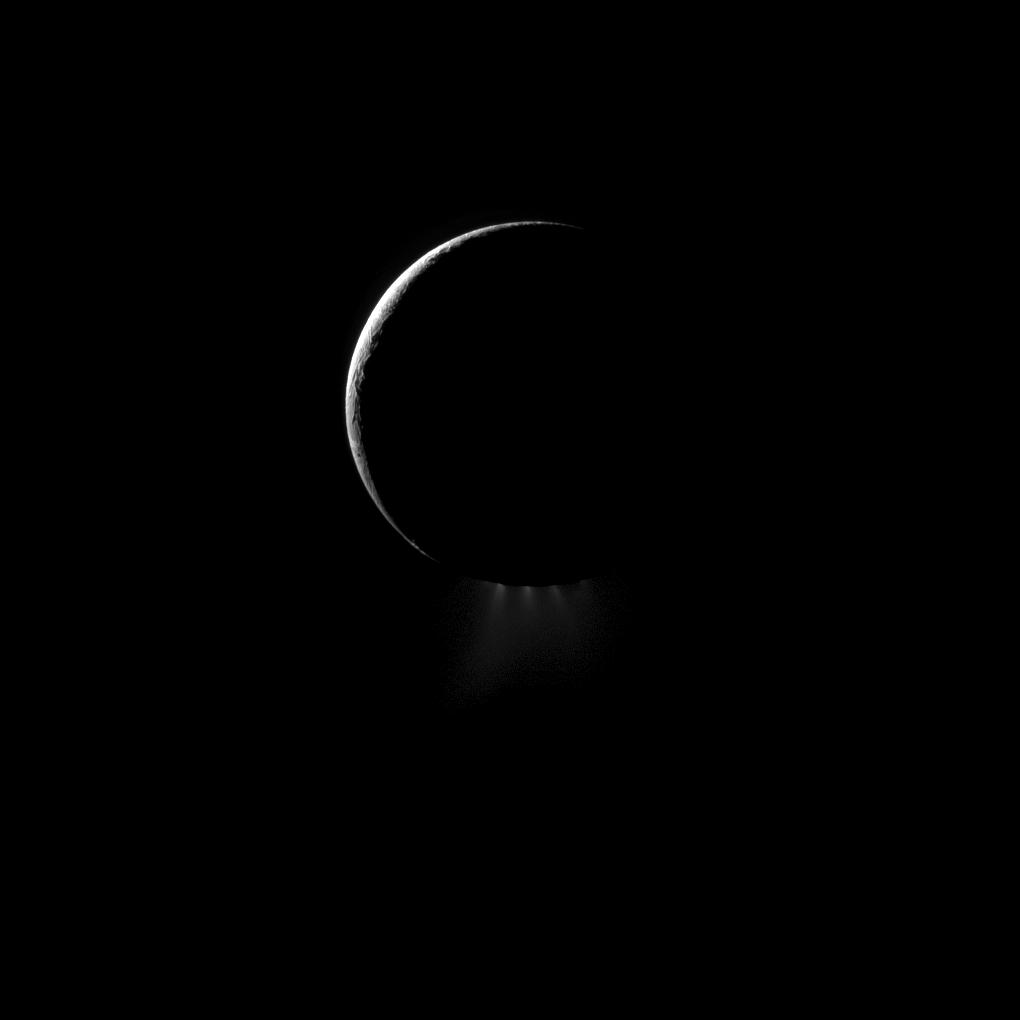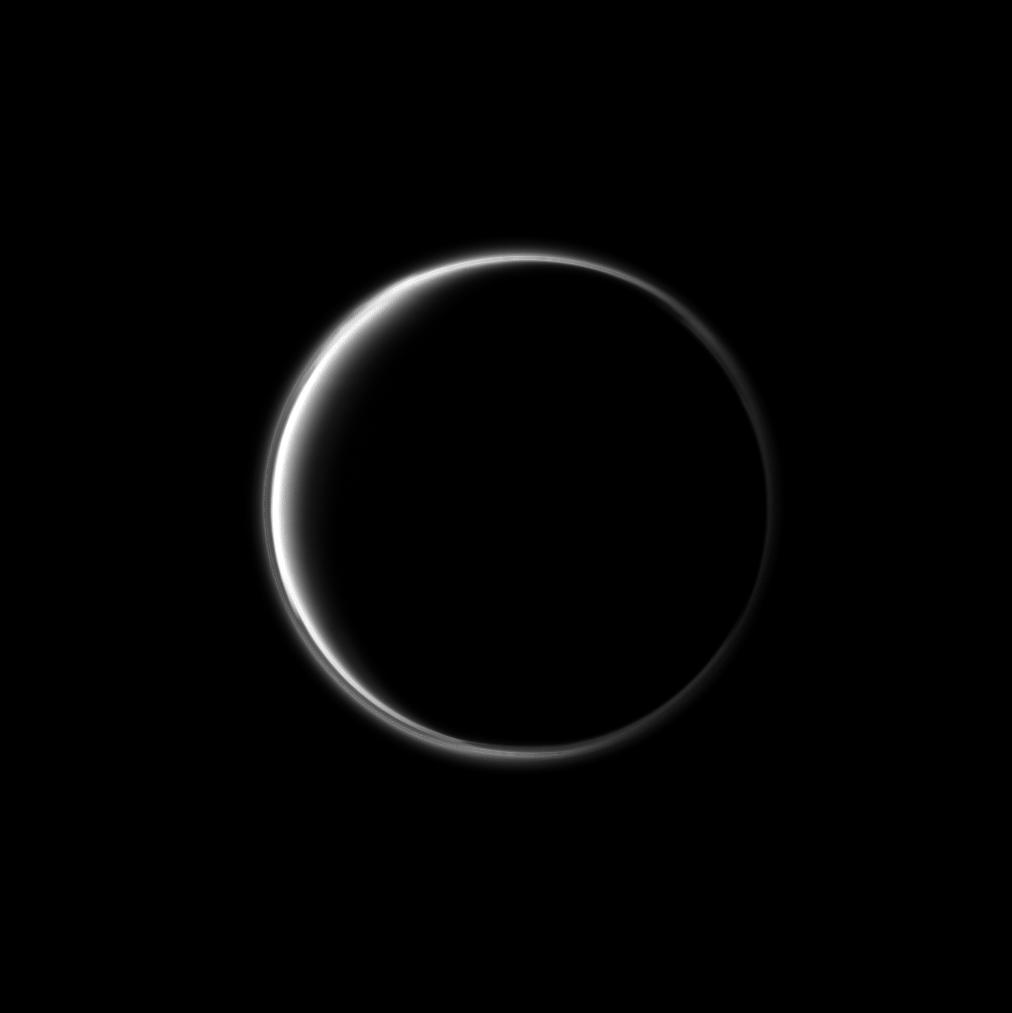Owlice, you forgot to ask who went tobogganing across the moonscape.owlice wrote:bystander, that's fabulous; thank you!!
Moons of our Solar System
Re: Moons of our Solar System
To find the Truth, you must go Beyond.
Re: Moons of our Solar System
Falling over!!beyond wrote:And what's with the ::clunk:: Hanging up the phone?
A closed mouth gathers no foot.
Re: Moons of our Solar System
For me that would be a ::thump::, which really wood be thumpting to see/hear an owl fall out of a chair and hit the floor.owlice wrote:Falling over!!beyond wrote:And what's with the ::clunk:: Hanging up the phone?
But what about the Hummina,hummina,hummina
To find the Truth, you must go Beyond.
Re: Moons of our Solar System
The Honeymooners' Ralph Kramden (Jackie Gleason) used to say "hummina hummina hummina" when stumped and at a loss for words, especially when caught in one of his schemes by owlice, his wife.beyond wrote:But your Hummina, hummina, hummina, leaves me in the dark even when i find out Hummina Gleason is a champion Mastiff.
So is hummina,hummina,hummina a referrence to everything going to the dogs
But what about the Hummina,hummina,hummina
The name Hummina Gleason is a tribute to Ralph Kramden/Jackie Gleason.
Re: Moons of our Solar System
Oh, I know who did that! It was skiing rather than tobogganing, and it was the device -- dare I call it a robot? -- who skis on the moon in "A Grand Day Out."beyond wrote: Owlice, you forgot to ask who went tobogganing across the moonscape.
Oh, the things I've learned from Wallace and Gromit; I even know where to find Wensleydale cheese locally! <g>
A closed mouth gathers no foot.
Re: Moons of our Solar System
I understood Gleason to say - humma, humma, humma........Not hummina, hummina, hummina. And of course He would ask sammy for a little travelin' music and "away" he'd go.bystander wrote:The Honeymooners' Ralph Kramden (Jackie Gleason) used to say "hummina hummina hummina" when stumped and at a loss for words, especially when caught in one of his schemes by owlice, his wife.beyond wrote:But your Hummina, hummina, hummina, leaves me in the dark even when i find out Hummina Gleason is a champion Mastiff. So is hummina,hummina,hummina a referrence to everything going to the dogs
But what about the Hummina,hummina,hummina
The name Hummina Gleason is a tribute to Jackie Gleason.
To find the Truth, you must go Beyond.
- neufer
- Vacationer at Tralfamadore
- Posts: 18805
- Joined: Mon Jan 21, 2008 1:57 pm
- Location: Alexandria, Virginia
Honey Mooners of our Solar System
As a practicing member of the IOFSR I am not allowed to divulge our secret shibboleths.owlice wrote:
beyond, you're clearly too young to know the reference for hummina hummina hummina.
Bet neufer gets it, though; he's even older than I am.
However, this may be revealed:
Perhaps, The Asterisk would be more popular if set up in accordance with the above guidelines.http://www.freemasonry.bcy.ca/fiction/fraternities/raccoons.html wrote:
International Order of Friendly Sons of the Raccoons
[img3="Arthur William Matthew "Art" Carney (1918/11/04 - 2003/11/09) andBus driver Ralph Kramden (Jackie Gleason) and sewer worker Ed Norton (Art Carney) were members of the Raccoon Lodge in Brooklyn, New York. The fraternity was called the International Order of Friendly Sons of the Raccoons, the International Order of Loyal Raccoons, or at times, the Royal Order of Raccoons. Founded by Toots Mondello and Herman Hildebrand in 1907,
Herbert John "Jackie" Gleason (1916/02/26 - 1987/06/24)"]http://www.freemasonry.bcy.ca/fiction/f ... ccoons.jpg[/img3]
their motto was "E Pluribus Raccoon".
Ralph and Ed belonged to Bensonhurst chapter which had a membership of 300. Their uniform, costing $35, was a double-breasted military jacket with oversized epaulets on each shoulder, white shirt, dark tie and a hat with a raccoon tail. Morris Fink, a sewer worker with Ed Norton, was the Grand High Exhalted Mystic Ruler. He wore three tails on his coonskin hat. George Williams was the president of the Bensonhurst Raccoons. Monthly dues were $2.
Official club greeting (Bylaws, sec. 2)
The handshake involved touching elbows (first right then left), followed by a "Woooooo" sounding cry as they wiggled the raccoon tail on their lodge hat. They ended by
chorusing: "Brothers under the pelt."
Club songs
Membership requirements (Bylaws, sec. 2)
- Alma Mater
From the hallowed streets of Greenpernt,
To the shores of Sheepshead Bay,
From the Verrazano Narrows,
To Canarsie across the way...
We have come together, one and all,
In fellowship to commune,
And to glorify the Grand Exalted
Brotherhood of Raccoons. [Howl]
Marching song
In the West and in the East
There’s a mighty little beast
For courage there is no other.
When the chips are all at stake
We are proud to call him brother.
So with our noble tails entwined
And a spirit strong of mind
We'll have hearts that cannot melt.
In the forest, in the trees
On the land or seven seas
We're brothers under the pelt.
Raccoons, the noble Raccoons
- US citizen for the last six months
- have a public school diploma
- pay a $1.50 initiation fee.
Raccoon of the Year privileges
- Opening the first clam at the annual clambake
- Steering the boat on the annual ride up the Hudson River to Raccoon point.
- Free burial with spouse at Raccoon National Cemetery in Bismark, North Dakota.
- Opportunity to run for Grand High Exhalted Mystic Ruler.
- Throwing the first bag of water out of the hotel window at the Raccoon convention.
Lodge events
- Annual national conventions in Chicago and Minneapolis.
- Annual ride up the Hudson River to Raccoon point.
- Annual clambake.
- Annual fishing trip (wives not allowed)
- National Mambo dance championship.
- Annual Costume Party.
- Raccoon Lodge bowling team, the Hurricanes.
There was a $15 fee for each event.
Drinking toast: Fingers to fingers, thumbs to thumbs, watch out below, here she comes.
Art Neuendorffer
- mexhunter
- Science Officer
- Posts: 467
- Joined: Tue Apr 27, 2010 1:41 pm
- AKA: César Cantú
- Location: Monterrey, Mexico.
- Contact:
Re: Moons of our Solar System
I come to learn and to have fun.
Re: Moons of our Solar System
See previous page: http://asterisk.apod.com/vie ... 36#p132236mexhunter wrote: http://www.nasa.gov/multimedia/imagegal ... _1761.html
- mexhunter
- Science Officer
- Posts: 467
- Joined: Tue Apr 27, 2010 1:41 pm
- AKA: César Cantú
- Location: Monterrey, Mexico.
- Contact:
Re: Moons of our Solar System
Thank you.bystander wrote:See previous page: http://asterisk.apod.com/vie ... 36#p132236mexhunter wrote: http://www.nasa.gov/multimedia/imagegal ... _1761.html
As this post is revived today, and today I received email from this "Image of the Day", to include, but definitively forgot that you already posted it.
My apologies.
Regards
César
I come to learn and to have fun.
Re: Moons of our Solar System
Crescent Moon
NASA IOTD | 17 Sept 2010
NASA IOTD | 17 Sept 2010
Cresent Moon
A last quarter crescent moon above Earth's horizon is featured in this image photographed by the Expedition 24 crew on the International Space Station.
Image Credit: NASA
Moons of our Solar System: Helene (Saturn)
Catching Helene (PIA 12723)
CICLOPS | 17 Sept 2010
CICLOPS | 11 June 2010
CICLOPS | 17 Sept 2010
Closest View of Helene (PIA 12653)Although travelling at great speed, Cassini managed to capture this close view of Saturn's small moon Helene during a flyby on March 3, 2010.
Saturn's atmosphere makes up the background of this composition. See PIA12653 for another image taken during this closest flyby of Helene.
This view looks toward the anti-Saturn side of Helene (33 kilometers, 21 miles across). North on Helene is up and rotated 44 degrees to the right.
The image was taken in visible light with the Cassini spacecraft narrow-angle camera. The view was obtained at a distance of approximately 19,000 kilometers (12,000 miles) from Helene and at a Sun-Helene-spacecraft, or phase, angle of 25 degrees. Image scale is 113 meters (370 feet) per pixel.
Credit: NASA/JPL/SSI
CICLOPS | 11 June 2010
Cassini snapped this image during the spacecraft's closest flyby of Saturn's moon Helene on March 3, 2010.
See PIA09015 for the previous closest view of Helene (33 kilometers, 21 miles across). The small moon leads Dione by 60 degrees in the moons' shared orbit. Helene is a "Trojan" moon of Dione, named for the Trojan asteroids that orbit 60 degrees ahead of and behind Jupiter as it circles the Sun.
Lit terrain seen here is on the anti-Saturn side of Helene. The south pole of the moon is in the lower right of the image.
The image was taken in visible light with the Cassini spacecraft wide-angle camera. The view was obtained at a distance of approximately 1,900 kilometers (1,200 miles) from Helene and at a Sun-Helene-spacecraft, or phase, angle of 90 degrees. Scale in the original image was 235 meters (770 feet) per pixel. The image has been magnified by a factor of two and contrast-enhanced to aid visibility.
Credit: NASA/JPL/SSI
Moons of our Solar System: Enceladus
Enceladus: Highlighting Plumes
NASA JPL | Cassini Solstice Mission | 01 Oct 2010
Bad Astronomy | 01 Oct 2010
Enceladus, the Jet-Powered Moon
Universe Today | 01 Oct 2010
NASA JPL | Cassini Solstice Mission | 01 Oct 2010
Enceladus on full afterburnerAt least four distinct plumes of water ice spew out from the south polar region of Saturn's moon Enceladus in this dramatically illuminated image.
Light reflected off Saturn is illuminating the surface of the moon while the sun, almost directly behind Enceladus, is backlighting the plumes. See Bursting at the Seams to learn more about Enceladus and its plumes.
This view looks toward the Saturn-facing side of Enceladus (504 kilometers, or 313 miles across). North is up.
The image was taken in visible light with the Cassini spacecraft narrow-angle camera on Dec. 25, 2009. The view was obtained at a distance of approximately 617,000 kilometers (383,000 miles) from Enceladus and at a Sun-Enceladus-spacecraft, or phase, angle of 174 degrees. Image scale is 4 kilometers (2 miles) per pixel.
Credit: NASA/JPL/SSI
Bad Astronomy | 01 Oct 2010
Enceladus, the Jet-Powered Moon
Universe Today | 01 Oct 2010
Re: Moons of our Solar System
Six moons with one shot
Planetary Society Blog | 09 Oct 2010
Planetary Society Blog | 09 Oct 2010
There are six, count them, six moons in this photo. Plus the outer edge of Saturn's rings. Awesome.
On October 6, 2010, Cassini managed to catch six different moons passing through its narrow-angle camera field of view at once. At the time, Cassini was on the southern (shadowed) side of the rings, so the uppermost part of the rings are closest to Cassini, and rings and moons orbiting Saturn appear to be going in a clockwise direction. With the Sun behind and to the left of the rings as seen from Cassini, the skinny multiple braid of the F ring is the brightest of all the visible rings; its sparse, dusty material scatters light forward to Cassini like dust motes in a sunbeam. The largest moon visible, Enceladus, is the farthest away from Cassini. Both Enceladus and Janus, the oval-shaped moon above it, have night sides lit by light reflected from Saturn. To the right of both Enceladus and Janus, between the bright F ring and the main rings, is Atlas. Immediately above Janus, orbiting along with a pair of ringlets within the Encke gap, is Pan. (Pan appears to be accompanied by a clump in one ringlet.) Immediately above Pan is Daphnis, making a bright spot within the Keeler gap at the outermost edge of the main rings. Above the F ring near the upper right corner of the image is Epimetheus. Unlike Janus and Enceladus, Epimetheus is located between Cassini and Saturn, so its night side is not lit up by reflected Saturnshine.
Moons of our Solar System: Hyperion
Cassini: Hyperion: Somersaulting Moon (2011 Jan 10)
The Cassini spacecraft captures a view of the southern latitudes of Saturn's tumbling moon Hyperion.
To learn more about this spongy moon and how it tumbles in its orbit, see Encountering Hyperion, Cosmic Blasting Zone and Odd World. Lit terrain seen here is mostly in the southern hemisphere of Hyperion (270 kilometers, or 168 miles across). The south pole of the moon is near the bottom of the illuminated terrain seen here.
The image was taken in visible light with the Cassini spacecraft narrow-angle camera on Nov. 28, 2010. The view was obtained at a distance of approximately 80,000 kilometers (50,000 miles) from Hyperion and at a Sun-Hyperion-spacecraft, or phase, angle of 98 degrees. Image scale is 476 meters (1,562 feet) per pixel.
Credit: NASA/JPL/SSI
Know the quiet place within your heart and touch the rainbow of possibility; be
alive to the gentle breeze of communication, and please stop being such a jerk. — Garrison Keillor
alive to the gentle breeze of communication, and please stop being such a jerk. — Garrison Keillor
Moons of our Solar System: Enceladus
Looking Over Enceladus (2011 Jan 24)
The Cassini spacecraft looks over cratered and tectonically deformed terrain on Saturn's moon Enceladus as the camera also catches a glimpse of the planet's rings in the background. The image was captured during the spacecraft's flyby of Enceladus on Nov. 30, 2010.
Geologically young terrain in the middle latitudes of the moon gives way to older, cratered terrain in the northern latitudes. See New to Old on Enceladus to learn more. This view is centered on terrain at 41 degrees north latitude, 202 degrees west longitude. North on Enceladus (504 kilometers, or 313 miles, across) is up and rotated 28 degrees to the right.
This view looks toward the northern, sunlit side of the rings from less than a degree above the ringplane.
The image was taken in visible light with the Cassini spacecraft narrow-angle camera. The view was acquired at a distance of approximately 46,000 kilometers (29,000 miles) from Enceladus and at a Sun-Enceladus-spacecraft, or phase, angle of 14 degrees. Image scale is 276 meters (906 feet) per pixel.
Credit: NASA/JPL/SSI
Know the quiet place within your heart and touch the rainbow of possibility; be
alive to the gentle breeze of communication, and please stop being such a jerk. — Garrison Keillor
alive to the gentle breeze of communication, and please stop being such a jerk. — Garrison Keillor
Moons of our Solar System: Luna
LROC: Nearside Spectacular! (2011 Feb 21)
LROC WAC mosaic of the lunar nearside
For two weeks in mid-December 2010, the LRO spacecraft remained nadir looking (straight down) so that the LROC Wide Angle Camera (WAC) could acquire ~1300 images, allowing the LROC team to construct this spectacular mosaic. As the Moon rotated under LRO's orbit, the ground track progressed from east to west (right to left in this mosaic), and the incidence angle at the equator increased from 69° to 82° (at noontime the incidence angle is 0°).
(Credit: NASA/GSFC/ASU)
1400 x 1400 pixels
Annotated
Zoomable
Know the quiet place within your heart and touch the rainbow of possibility; be
alive to the gentle breeze of communication, and please stop being such a jerk. — Garrison Keillor
alive to the gentle breeze of communication, and please stop being such a jerk. — Garrison Keillor
Moons of our Solar System: Rhea and Dione
Rhea and Dione: Look-alike Moons
NASA JPL-Caltech | Cassini Solstice Mission | 2011 Apr 04
NASA JPL-Caltech | Cassini Solstice Mission | 2011 Apr 04
Rhea and Dione seem like dark and light fraternal twins in this Cassini spacecraft image, with each of these two Saturnian moons displaying a large crater oriented similarly in the northern hemisphere.
Rhea, on the left, is closer to the Cassini spacecraft than Dione in this view. Saturn is out-of-frame, far to the right of this view.
Lit terrain seen here is on the anti-Saturn side of Rhea (1,528 kilometers, or 949 miles across) and the leading hemisphere of Dione (1,123 kilometers, or 698 miles across). North on the moons is up.
The image was taken in visible blue light with the Cassini spacecraft narrow-angle camera on Feb. 3, 2011. The view was acquired at a distance of approximately 1.2 million kilometers (746,000 miles) from Rhea and at a Sun-Rhea-spacecraft, or phase, angle of 75 degrees. The view was acquired at a distance of approximately 1.9 million kilometers (1.2 million miles) from Dione and at a Sun-Dione-spacecraft, or phase, angle of 75 degrees. Image scale is 7 kilometers (4 miles) per pixel on Rhea and 11 kilometers (7 miles) per pixel on Dione.
Credit: NASA/JPL/SSI
Know the quiet place within your heart and touch the rainbow of possibility; be
alive to the gentle breeze of communication, and please stop being such a jerk. — Garrison Keillor
alive to the gentle breeze of communication, and please stop being such a jerk. — Garrison Keillor
Moons of our Solar System: Enceladus
Plumes and a Crescent
NASA JPL-Caltech | Cassini Solstice Mission | 2011 Apr 18
NASA JPL-Caltech | Cassini Solstice Mission | 2011 Apr 18
A crescent Enceladus, imaged from the night side, shows off its spectacular water ice plumes emanating from the south polar region of this moon of Saturn.
This image was captured at a phase, or Sun-Enceladus-spacecraft, angle of 157 degrees so that sunlight would reveal the backlit plumes. Terrain near the south pole is now dark as spring has come to the northern hemisphere of the moon. See Bursting at the Seams and New to Old on Enceladus for earlier, closer views.
Lit terrain seen here is on trailing hemisphere of Enceladus (504 kilometers, or 313 miles across). North is up.
The image was taken in visible light with the Cassini spacecraft narrow-angle camera on Jan. 30, 2011. The view was obtained at a distance of approximately 228,000 kilometers (142,000 miles) from Enceladus. Image scale is 1 kilometer (0.6 miles) per pixel.
Credit: NASA/JPL/SSI
Know the quiet place within your heart and touch the rainbow of possibility; be
alive to the gentle breeze of communication, and please stop being such a jerk. — Garrison Keillor
alive to the gentle breeze of communication, and please stop being such a jerk. — Garrison Keillor
Moons of our Solar System: Titan
Ethereal Ring
Cassini Solstice Mission
NASA JPL-Caltech | 2011 May 02
The Cassini spacecraft looks toward the dark side of Saturn's largest moon and captures the halo-like ring produced by sunlight scattering through the periphery of Titan's atmosphere.
A detached, high-altitude global haze layer encircles Titan. See Titan's Halo to learn more. This view looks toward the trailing hemisphere of Titan (5,150 kilometers, or 3,200 miles across). North on Titan is up.
The image was taken with the Cassini spacecraft narrow-angle camera on Nov. 26, 2010 using a spectral filter sensitive to wavelengths of ultraviolet light centered at 338 nanometers. The view was obtained at a distance of approximately 1.9 million kilometers (1.2 million miles) from Titan and at a Sun-Titan-spacecraft, or phase, angle of 154 degrees. Image scale is 12 kilometers (7 miles) per pixel.
Credit: NASA/JPL/SSI
Know the quiet place within your heart and touch the rainbow of possibility; be
alive to the gentle breeze of communication, and please stop being such a jerk. — Garrison Keillor
alive to the gentle breeze of communication, and please stop being such a jerk. — Garrison Keillor
Re: Moons of our Solar System
Coooool!!!!! I know I've said it before, but wow, our solar system has splendid moons!!!
A closed mouth gathers no foot.
Moons of our Solar System: Ice Queen Helene
Cassini Captures Ice Queen Helene
NASA JPL-Caltech Cassini | 2011 Jun 20
CICLOPS: Helene Rev 149 Raw Preview
NASA’s Cassini spacecraft has successfully completed its second-closest encounter with Saturn’s icy moon Helene, beaming down raw images of the small moon. At closest approach, on June 18, Cassini flew within 4,330 miles (6,968 kilometers) of Helene’s surface. It was the second closest approach to Helene of the entire mission.
Cassini passed from Helene’s night side to the moon’s sunlit side. It also captured images of the Saturn-facing side of the moon in sunlight, a region that was only illuminated by sunlight reflected off Saturn the last time Cassini was close, in March 2010. This flyby will enable scientists to finish creating a global map of Helene, so they can better understand the history of impacts to the moon and gully-like features seen on previous flybys.
The closest Helene encounter of the mission took place on March 10, 2010, when Cassini flew within 1,131 miles (1,820 kilometers) of the moon.
Credit: NASA/JPL/SSI
Know the quiet place within your heart and touch the rainbow of possibility; be
alive to the gentle breeze of communication, and please stop being such a jerk. — Garrison Keillor
alive to the gentle breeze of communication, and please stop being such a jerk. — Garrison Keillor
Re: Moons of our Solar System
I really like that snow-white little gem of a moon, Enceladus, but I haven't visited this thread very often. Anyway, it was fun to see the Enceladus pics from October 01, 2010 - how white it is!!! And how gushing!!! - and from Jan 24, 2011 - how WHITE it is! So much whiter than Saturn's rings!!! And I like the picture from April 18, 2011. Enceladus doesn't look obviously white there, but look at those jets of water ice!
Although Enceladus is my hands-down favorite among the moons of Saturn, and Iapetus is number two on my list of interesting Saturn moons, I must say that Titan does look fascinating in that May 2, 2011 portrait.
I had never heard of moonlet Helene, but those June 20 images look very interesting. In particular, I find it fascinating that the surface of Helene seems to be covered by tracks left behind by "landslides".
Ann
Although Enceladus is my hands-down favorite among the moons of Saturn, and Iapetus is number two on my list of interesting Saturn moons, I must say that Titan does look fascinating in that May 2, 2011 portrait.
I had never heard of moonlet Helene, but those June 20 images look very interesting. In particular, I find it fascinating that the surface of Helene seems to be covered by tracks left behind by "landslides".
Ann
Color Commentator
- neufer
- Vacationer at Tralfamadore
- Posts: 18805
- Joined: Mon Jan 21, 2008 1:57 pm
- Location: Alexandria, Virginia
Re: Moons of our Solar System: Ice Queen Helene
http://www.planetary.org/blog/article/00003072/ wrote:
Cassini finally catches Helene
The Planetary Society Blog
By Emily Lakdawalla Jun. 20, 2011
<<The Cassini team has had a wretched time trying to get pictures of Helene in the past, but their streak of bad luck is over. Helene is one of the four "co-orbital" moons in the Saturn system, which occupy metastable spots in the leading and trailing Lagrangian points on the orbits of Tethys and Dione. It's the biggest of the four, but that's not saying much; it's only about 36 by 32 by 30 kilometers across, so it's in the same general size range as Phobos. It's proven challenging to predict where it's going to be with enough accuracy to make sure Cassini can capture it in its camera field of view, with the result that nearly every imaging sequence that Cassini has been commanded to take of Helene has seen the moon wander out of the field of view at one time or another. Well, Cassini has finally achieved gorgeous global imaging of Helene with a spectacular flyby on Saturday, in which they absolutely nailed the spacecraft's pointing and got Helene to pose prettily for the camera from beginning to end of the encounter. And what a wacky, wacky world Cassini has revealed Helene to be!! We saw these gullies on the previous close flyby but this is a much better view. There are two things that are very strange about these gullies. One is to see them at all. Features like this, if seen on Earth or even Mars, would be assumed to have something to do with water, but there is no possibility of liquid water on Helene (though it is likely made mostly of rock-hard water ice). These gullies must form by a dry process in which material -- likely very powdery dusty stuff -- cascades toward local topographic lows.[youtube]http://www.youtube.com/watch?v=g9nLyLXf ... r_embedded[/youtube]The other thing that is very strange is the strong difference in color between the higher-standing stuff and the smooth gully slide areas in between them. Others of Saturn's moons have some color variations across their surfaces, but really I don't know of one other than Iapetus where there are such sharp boundaries between one color of material and another. The color differences are most obvious on the right side of the image, where the Sun hits Helene directly and there aren't many cast shadows; color differences fade as you get toward the lower and lower light near the terminator at the left side of the image. Those color differences are what make this movie version of the flyby images appear to "beat" -- every time an image is shot through a short-wavelength ultraviolet filter, the inter-gully ridge areas darken substantially. I'm kind of proud of how this animation turned out -- feel free to share it!Cassini's June 2011 Helene flyby (bounces 3 times)
As you watch the animation, try focusing on different areas.
Like the massive crater in the north that is partially illuminated
in the opening of the animation. Or the faceted shape of the moon,
which suddenly brings a huge sunlit face into view. Also try to see
if you can see the shadows move across Helene's face as it rotates;
most of the apparent motion is due to Cassini's motion,
but some is Helene rotating on its axis.
Credit: NASA / JPL / SSI / animation by Emily Lakdawalla
Cassini got its best-ever view of Saturn's moon Helene on June 18, 2011, when it approached to within 7,000 kilometers. Helene is a co-orbital moon of Dione. The sunlit face is mostly the side of the moon that always faces Saturn, and is covered with strange gully-like features. The animation "bounces" back and forth to help the viewer see the 3D shape of Helene.
The surface appears to "beat" with contrast changes because Cassini was cycling through different filters to take the images. In short-wavelength filters, the areas between gullies are darker than the smooth gully floors, while there is less contrast between them in the longer-wavelength filters.
To generate this animation, I aligned the frames and rotated them 180 degrees to place north up. Then I used the Photoshop "dust and scratches" filter to remove most of the cosmic ray hits. This also removed a bit of detail from gully areas, unfortunately, but it saved me a lot of time and effort. I cleaned up the worst remaining cosmic ray hits using the clone tool. I adjusted the contrast to push black space to completely black and to bring out some more detail in shadowed areas.
There are a couple of dozen little tiny bowl-shaped impact craters scattered across the image, and there are eroded features that are almost certainly older, larger impact craters, but really there are not very many craters considering Helene's location in the shooting gallery of the Saturn system, so whatever process makes these gullies has also very likely been active recently and has wiped away past smaller craters. This inference becomes even more interesting when you look at the opposite face of Helene, the one that faces out from Saturn, which is heavily cratered as you might expect. Ian Regan put together a really nice comparison of Cassini's various views of Helene's two faces: Cassini's views of Helene through March 2010. Why are Helene's two sides so different? It's just one of many mysteries that Cassini's science team still has to solve.
Art Neuendorffer



